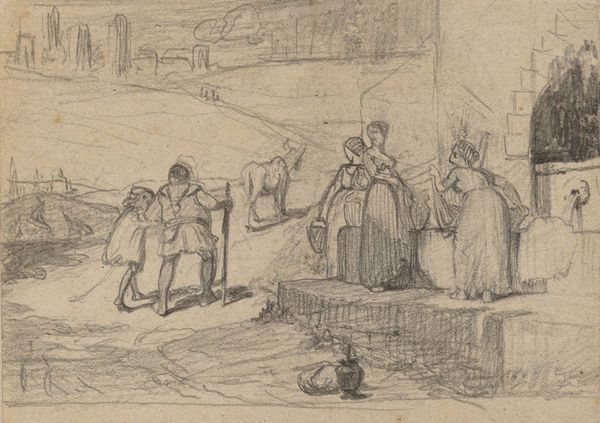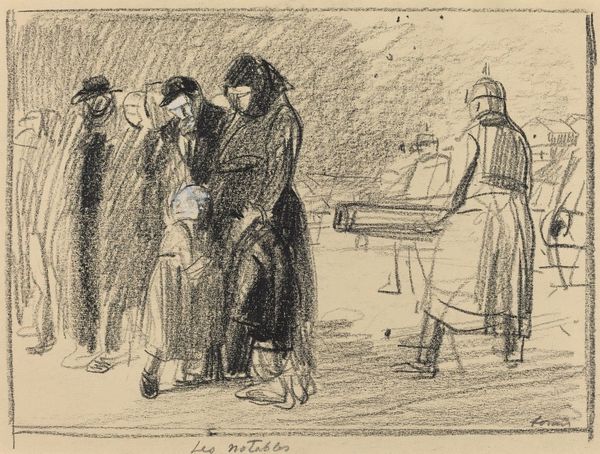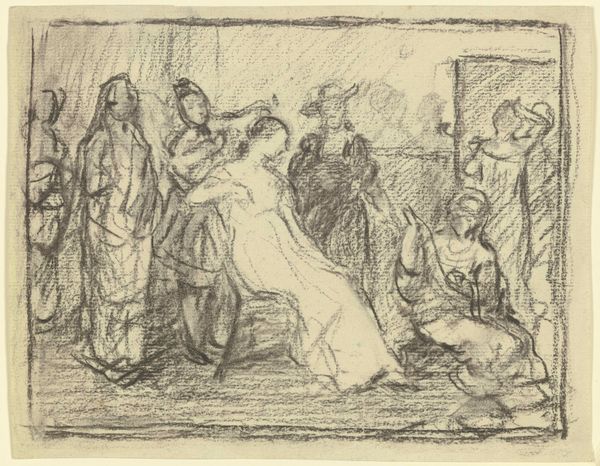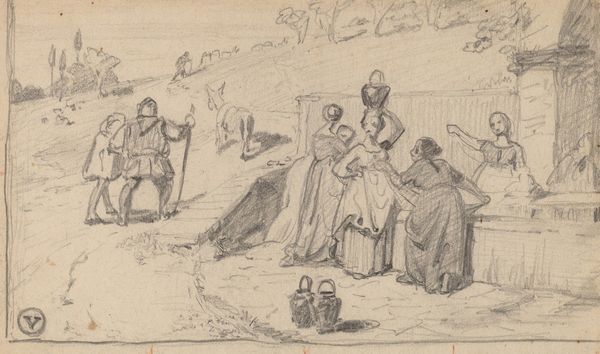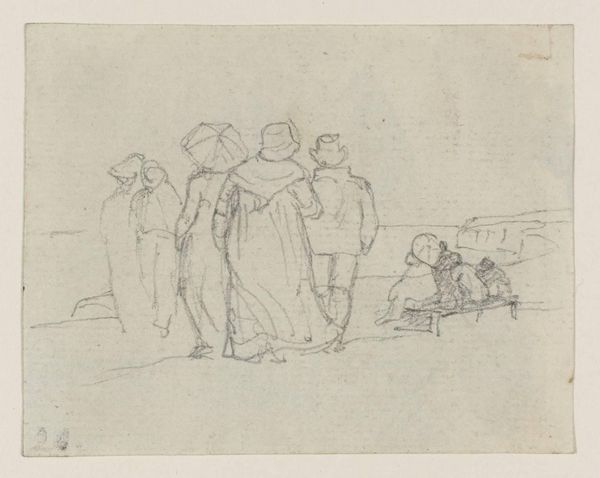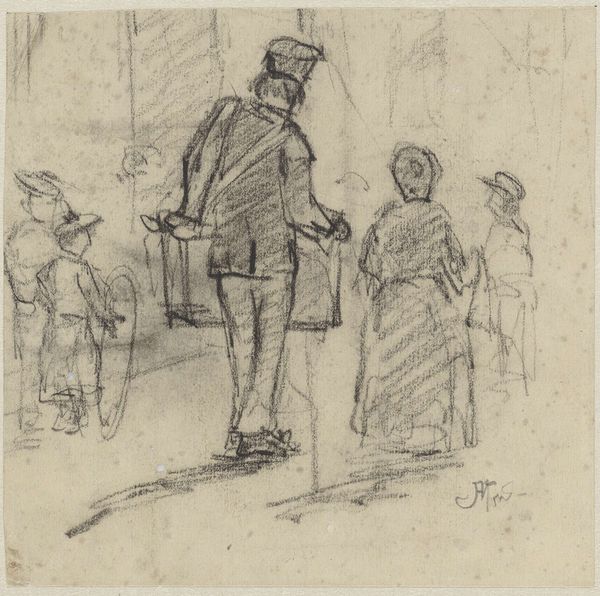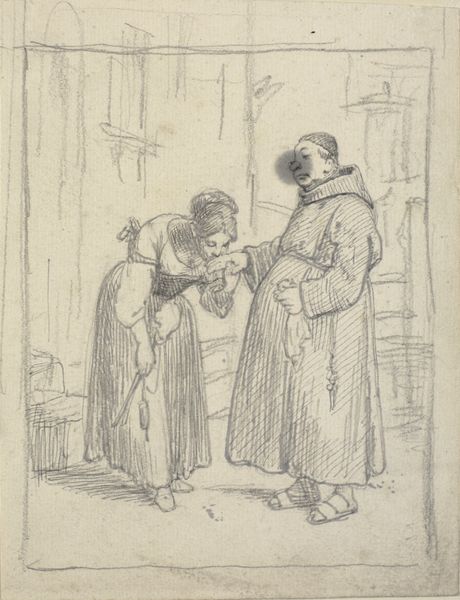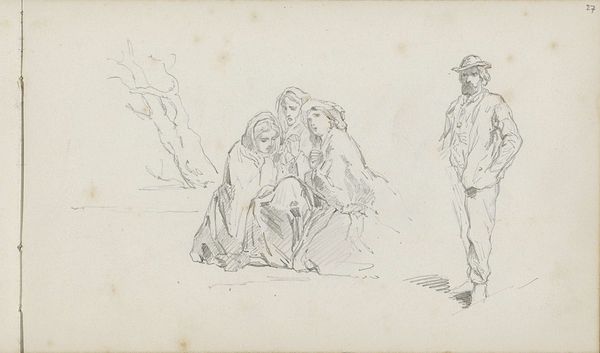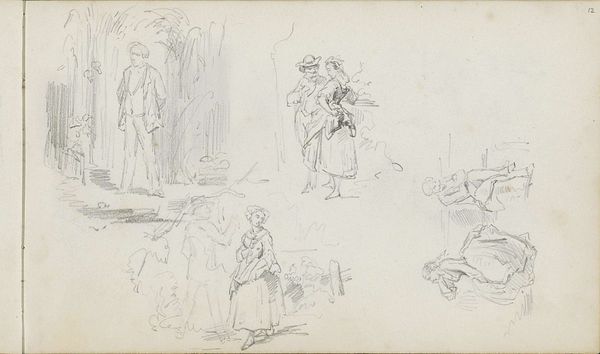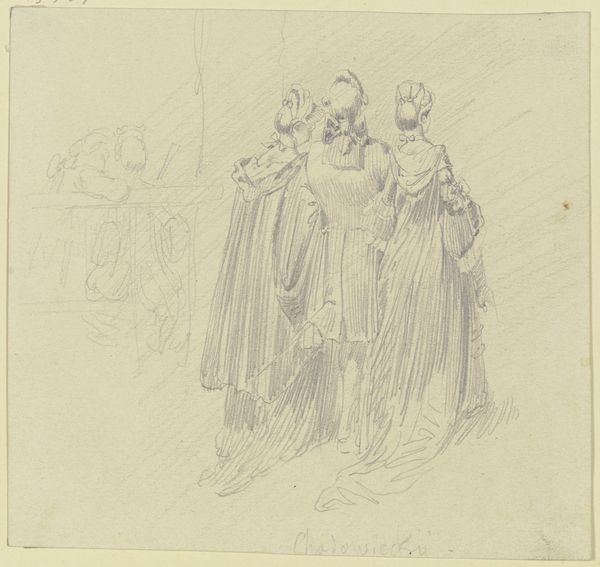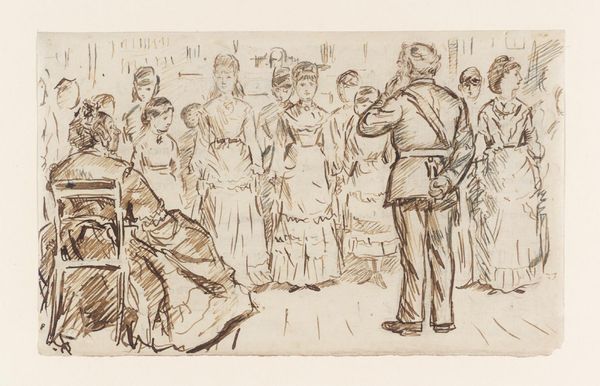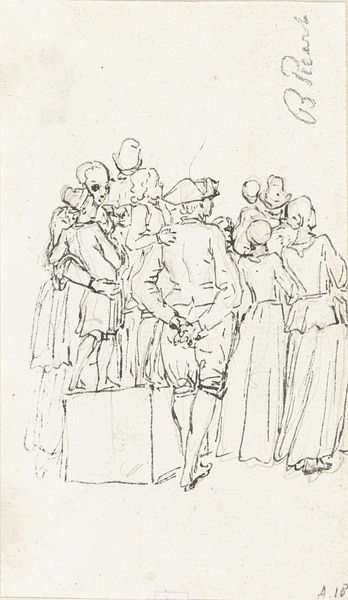
Copyright: Public Domain: Artvee
Curator: There's an undeniable solemnity about this drawing, almost as if it is tracing the roots of empathy and disillusionment. The sketchiness only adds to a feeling of vulnerability. Editor: Well said. What we’re looking at is “Son and the Donkey,” a pencil drawing made around 1859 by Elihu Vedder. The artwork resides in the realm of romanticism, delving into themes of narrative and figuration. The way Vedder renders each character, despite their simplicity, reveals so much about power dynamics. Curator: Yes! The stooped figure with the donkey calls to mind classical images of burdened workers. Vedder captures how human dignity can persist, even under duress. The presence of the looming figures further enhances that impression, a sort of moral contrast to the arduous journey the individual is taking. Editor: Absolutely. Notice the contrast in garments too, and the possible judgement among the clothed and cloaked. There's such emphasis placed on the visible disparity between the characters; in a cultural context, Vedder's visual language reads as an explicit commentary on labor exploitation and wealth inequality. Curator: Interesting. I initially read them as perhaps onlookers, not necessarily perpetrators of any injustice. But I appreciate the lens you bring—that shifts my reading quite a bit! It brings to mind certain Biblical motifs, the notion of silent, powerful actors watching those less fortunate… Editor: I think Vedder’s brilliance here is to offer us the space for different readings. Whether figures are actively exploitative or simply passive bystanders in the face of injustice, it reflects enduring issues regarding social complicity, especially class, privilege and status in a romantic narrative. Curator: It makes me think about how these images endure in our collective memory, continually re-inscribing ideas of oppression and complicity that still resonate powerfully today. Editor: Indeed, prompting the kind of conversations we need to be having to unearth layers of societal guilt in order to incite change. Curator: A deeply affecting piece; I am now leaving with so much to reflect on. Editor: A concise study that delivers enduring narratives, rendered unforgettable through suggestion.
Comments
No comments
Be the first to comment and join the conversation on the ultimate creative platform.

